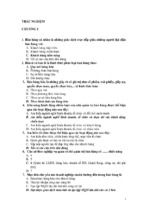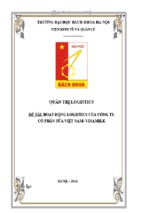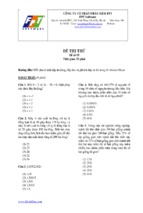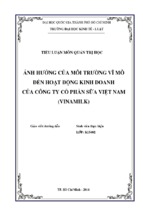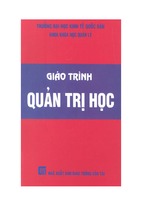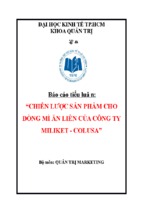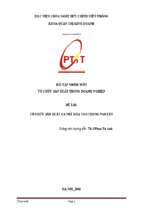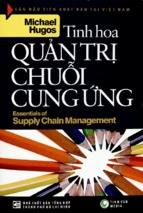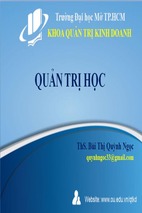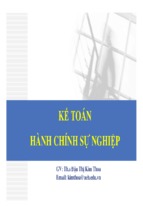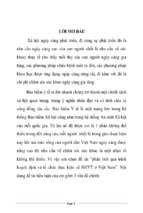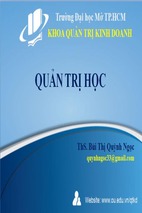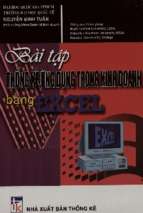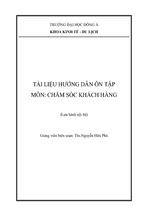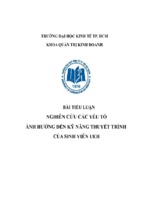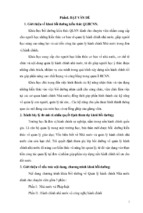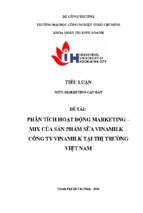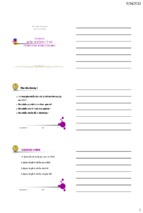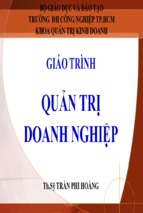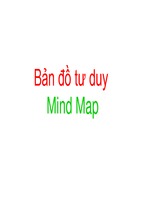202
SPECIAL EVENTS AND SPONSORSHIPS
EXHIBIT 15.3
WWF Canada Personalization Form
As the following e-mail analysis shows, participants opened the e-mail at a very
high rate: 78 percent.
Thank You E-mail Analysis
Recipients
Recipients who opened e-mail
Recipients who clicked any link
Click-throughs
Recipients who replied to e-mail
Recipients who unsubscribed
Total
1212
942
39
51
4
1
% of Total Received
N/A
78%
3%
4%
0%
0%
A month later, the president sent another personalized e-mail, this time giving
participants a sense of the impact that their fundraising was having on wildlife (see
Exhibit 15.9).
203
Power of the Few
EXHIBIT 15.4
Sponsor Acquisition Form
EXHIBIT 15.5
Donor E-Receipt
204
SPECIAL EVENTS AND SPONSORSHIPS
4500
2003 Online Registrants
2003 Total Registrants
2002 Offline Registrants
4000
3500
3000
2500
2000
1500
1000
500
0
8
7
6
5
4
3
2
1
event
Weeks Prior to Event
EXHIBIT 15.6
Registrants by Week
Although the open rates were less for this e-mail (67 percent), it still demonstrated
that the vast majority of participants would open e-mail from this organization: a
privilege WWF Canada is careful not to overuse.
Impact E-mail Analysis
Recipients
Recipients who opened e-mail
Recipients who clicked any link
Click-throughs
Recipients who replied to e-mail
Recipients who unsubscribed
Total
1192
803
129
211
1
5
% of Total Received
N/A
67%
11%
18%
0%
0%
DEFINING THE DIGITAL DONOR ELITE
The story of Janet and her thirtieth birthday is exceptional, but it isn’t unique. All
around the world, the Internet is amplifying the impact that passionate people can
have on a fundraising campaign.
When we looked at our data we found many examples of the digital donor elite:
One volunteer raised $9,010 from 139 donations.
Another volunteer raised $15,059 from 98 donations.
Still another raised $25,974 from 944 e-mails.
Defining the Digital Donor Elite
EXHIBIT 15.7
205
Online Measurement Tool
Clearly these are exceptional individuals who have passion for their causes. The
online tools allowed them to share their passion in numbers and geographies that
otherwise would have been unthinkable with paper pledge forms.
When we studied online campaigns we found that the aggregate data told a striking story: on average, the top 10 percent of online fundraisers accounted for more
than 50 percent of all online dollars collected. When we shared these statistics with
experienced offline fundraisers, the reaction we received was “Of course—we’ve
known for a long time that it only takes a small percentage of people to account for
most of our fundraising.”
But this message hasn’t played a central role in online fundraising discussions.
Too often, we find organizations with no plan, or insufficient plans, to follow up and
communicate with this digital donor elite in a way that could be distinguished from
plans for their general online donors.
Think of how your organization would steward someone who wrote a check for
$25,000. How about someone who e-mailed friends, family, and colleagues to collectively raise $25,000 online?
206
EXHIBIT 15.8
SPECIAL EVENTS AND SPONSORSHIPS
Personalized Thank You
PEOPLE GIVE TO PEOPLE
High Tech and High Touch
For years we’ve heard how the Internet will radically change the operations of nonprofit organizations in the future. But bear in mind that high tech without high touch
won’t go very far.
People Give to People
EXHIBIT 15.9
207
Follow-Up E-Mail
Recall the last time you made a contribution to a charity. Did you wake up one
morning with the desire to give and then seek out a worthy organization to accept your
generosity? Or were you prompted to give? If you’re like most of us, the reason you
didn’t give to a cause is because you were never asked to give. If you were asked to give
but didn’t give, then the wrong person is asking you.
208
SPECIAL EVENTS AND SPONSORSHIPS
The Internet gives us the ability to take this simple concept—getting the right person to ask you to give—to tremendous scale. Imagine a charity that you care for deeply.
Now imagine that charity asking you to ask two friends for a gift. You’d likely call
them, or mention it to them the next time you met. But what if the charity needed
you to ask 50 friends? At that point, you’d have to turn to e-mail.
Getting Your E-Mails Read: The Power of “From”
We’ve been fretting over e-mail newsletters for some time now. At first we were dazzled by the ability to personalize the e-mail “Dear Philip.” If we knew something about
Philip (such as my past year’s gift), we could go even further: “Dear Philip, thank you
so much for your gift last year of $100. . . .”
We would also play with the subject line, trying to measure which phrase would
increase the open rate of the e-mail. Some of us would apply good direct-mail logic
and create test cells to understand if the subject line “You can help today,” or “Today,
you can help,” would be better.
I’m sorry to break this news, but in e-mail much of this doesn’t matter! The real
magic is in the “From” field.
Your inbox likely resembles the image in Exhibit 15.10. We all have too much
e-mail. As you read this chapter, you might experience a slight sense of stress that
you’ve spent too much time away from your e-mail inbox, and that as the minutes
tick by, it’s becoming more and more congested.
EXHIBIT 15.10
Sample Inbox
209
Many Things Can Be an Online Special Event
How do we sort through too much information in our inboxes? We look to see
who sent it. If it’s from our boss, our friend, an important client or donor, we’ll open
it first. If it’s from someone we don’t know, we might delete it without opening it for
fear of a virus. In fact, I’ve found that there is a certain satisfaction in rapidly deleting
any message that doesn’t appear at first glance to be important, thus pruning my
overflowing inbox.
This trend of deleting messages that aren’t “From” the right person will only increase in the future. If you’ve upgraded your Microsoft Outlook lately, you’ll notice
that much effort has been put into the Junk E-mail and Trusted E-mail filters. With the
click of a mouse, I can label someone—or some organization—as junk. As a nonprofit
organization, you never want to be labeled as junk. And in the future, we might only
be able to reach some people who have labeled us as “trusted.”
People with the Right “From” Field Can Raise the Money You Need
Given this situation online, organizations should rely on their connected supporters.
Let’s say I am a supporter of Charity A, and Charity A wishes to find new donors
and dollars.
There are several big benefits for Charity A to ask me to leverage my online network. First, I know many people that Charity A does not. I also have abundant information about my personal network that Charity A does not (e.g., who would consider
giving to Charity A, who just received a raise, etc.). Finally, I have the power of “from”
that Charity A does not—my e-mail will be opened by my peers.
If Charity A provides me with an easy way to help find donors (and possibly fun
incentives for doing so), I’ll help (see Exhibit 15.11). This is not rocket science. We’re
simply finding new ways to more efficiently execute old ideas.
MANY THINGS CAN BE AN ONLINE SPECIAL EVENT
When we refer to special events, nonprofits typically envision some type of -thon activity: a walk-a-thon, a bowl-a-thon, and so on. They tend to imagine large-scale activities that involve street-closures, T-shirts, and waiver forms. While these types of
special events will continue to do well and will continue to generate a tremendous number of online donations for charities, the Internet has allowed many groups to reframe
the online special events discussion.
Brainstorming activity: Sit down on the floor, take off your shoes, and take a deep
breath. Exhale slowly. Now, think of programs or activities that you currently manage, and write them down on a set of Post-Its. Use a different color of Post-Its and
write online on each of them. Simply match up one of your activities with online and
consider the result.
BAKE SALE + ONLINE = ?
DOOR-TO-DOOR CANVASSING + ONLINE = ?
ETC.
The following are just a few examples of how forward-thinking charities have
begun to redefine online special events.
210
EXHIBIT 15.11
SPECIAL EVENTS AND SPONSORSHIPS
Leveraging on Online Network
Golf Tournaments
A nonprofit named Kids Help Phone (http:// kidshelp.sympatico.ca) is dedicated to
providing online and telephone counseling to teens in distress. It has become a leader
in online campaigning. Its flagship special event is the Bell Walk for Kids, a national
event in two languages that has been online for three years.
In the spring of 2003, the nonprofit was interested to know if it could take some
of its lessons learned in the Bell Walk for Kids and apply them to smaller-scale activities. Its focus was an annual golf tournament that attracted many of the city’s financial services community.
The plan: Utilize its Internet-based event management technology and ask golfers
to register and solicit pledges online. Although many doubted that an activity such as
playing golf could generate pledge dollars (the common wisdom being that someone
had to at least sweat a little to ask for a donation), Kids Help Phone proved them
wrong. Golfers were asked to create a personal page explaining why they felt Kids Help
Phone was a worthy cause, and e-mail personalized solicitations to their coworkers,
suppliers, and clients (see Exhibit 15.12).
Many Things Can Be an Online Special Event
EXHIBIT 15.12
Online Golf
211
- Xem thêm -

